Pork shoulder is the essential cut for authentic pozole because its high fat content and connective tissue transform during slow cooking into tender, flavorful meat that gives pozole its signature rich broth and melt-in-your-mouth texture. Unlike leaner cuts that dry out, pork shoulder's marbling infuses the hominy and chili broth with deep umami flavor while maintaining perfect shreddable consistency after hours of simmering.
Key Takeaways
- Pork shoulder's 20-30% fat content creates pozole's rich broth that leaner cuts can't match
- Boston butt (upper shoulder) provides better marbling than picnic roast for optimal texture
- Slow cooking for 3-4 hours at 300°F breaks down collagen into gelatin for that authentic mouthfeel
- Bone-in cuts add extra flavor depth from marrow and collagen released during cooking
- Properly cooked pork shoulder should shred easily with a fork at 195°F internal temperature
Why Pork Shoulder Is Essential for Authentic Pozole
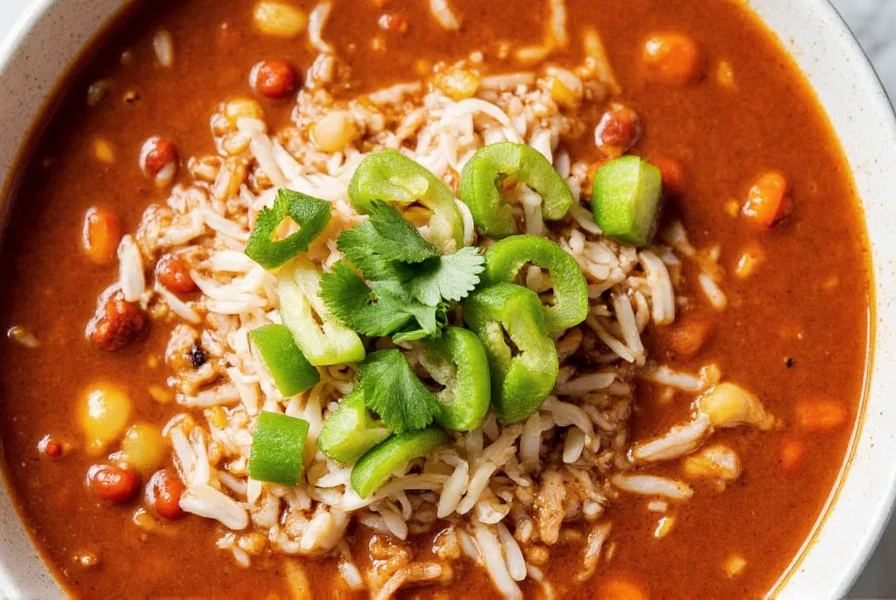
Authentic pozole relies on pork shoulder because no other cut delivers the perfect balance of fat, connective tissue, and flavor absorption needed for this traditional Mexican stew. When properly cooked, pork shoulder undergoes a remarkable transformation: the tough collagen breaks down into gelatin while the intramuscular fat melts slowly, creating that characteristic rich, slightly viscous broth that defines excellent pozole.
During the slow cooking process (minimum 3 hours), the pork shoulder's composition—approximately 20-30% fat and abundant connective tissue—works in harmony with the hominy and chili broth. This creates a flavor synergy impossible to achieve with leaner cuts like pork loin or tenderloin, which would become dry and stringy during the extended cooking required for pozole.
The Science Behind the Perfect Texture
Pozole's distinctive texture comes from collagen conversion. Pork shoulder contains abundant Type I collagen in its connective tissue, which begins transforming to gelatin at 160°F and completes around 200°F. This process:
- Creates the broth's characteristic viscosity without needing thickeners
- Allows meat to shred cleanly while retaining moisture
- Provides the mouth-coating richness that balances chili heat
- Helps hominy kernels maintain their distinctive "bloomed" appearance
Best Cooking Methods for Pork Shoulder Pozole
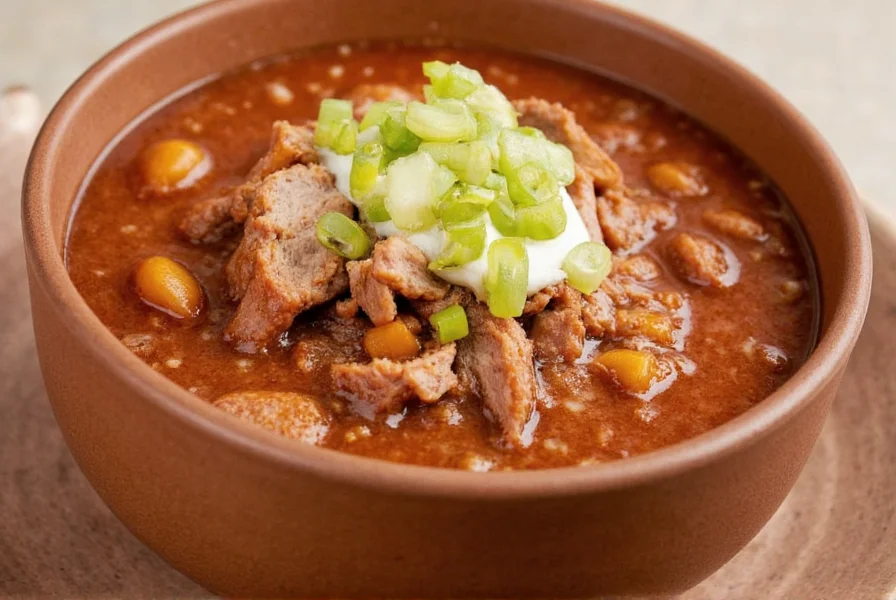
The cooking method dramatically impacts your pozole's final quality. Here's how the main techniques compare for optimal results:
| Cooking Method | Time Required | Texture Result | Flavor Development | Recommended For |
|---|---|---|---|---|
| Oven Roasting + Simmering | 4-6 hours total | Complex layered texture | ★★★★★ Maximum depth | Special occasions, authentic results |
| Slow Cooker | 8-10 hours | Uniform tenderness | ★★★☆☆ Good, but less complexity | Weeknight meals, hands-off cooking |
| Pressure Cooker | 1.5-2 hours | Tender but simplified | ★★☆☆☆ Limited depth | Time-crunched cooks |
| Traditional Stovetop | 3-4 hours | Authentic shredded texture | ★★★★☆ Excellent balance | Most reliable home method |
Professional chefs consistently recommend the two-stage method: roast bone-in pork shoulder at 300°F until internal temperature reaches 165°F (about 2-3 hours), then transfer to your pozole broth to finish cooking. This technique maximizes flavor development through the Maillard reaction while ensuring perfect texture integration with the broth.
How to Select the Best Pork Shoulder for Pozole
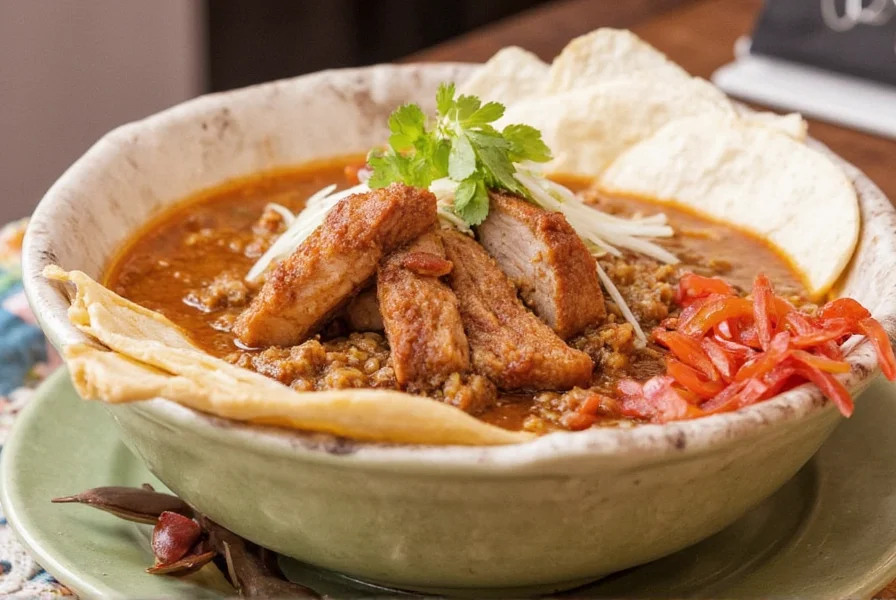
Not all pork shoulder is created equal for pozole. Understanding the differences between cuts prevents common mistakes that lead to dry or flavorless results.
Boston Butt vs. Picnic Roast: What Really Matters
- Boston Butt (Upper Shoulder): Contains 25-30% intramuscular fat, ideal marbling for pozole, cooks to perfect shreddable texture. Look for "collar butt" designation for highest quality.
- Picnic Roast (Lower Shoulder): Slightly leaner (15-20% fat), contains more sinew, requires longer cooking but offers robust flavor. Best when combined with Boston butt.
Critical Selection Criteria
- Marbling density: Should show visible fat streaks throughout (not just on edges)
- Color: Deep pink to light red (avoid grayish tones indicating age)
- Fat quality: Firm, white fat (yellow fat indicates older animal)
- Texture: Should feel slightly springy when pressed
- Skin presence: Skin-on provides extra flavor but requires removal after cooking
Where to Buy Quality Pork Shoulder for Pozole
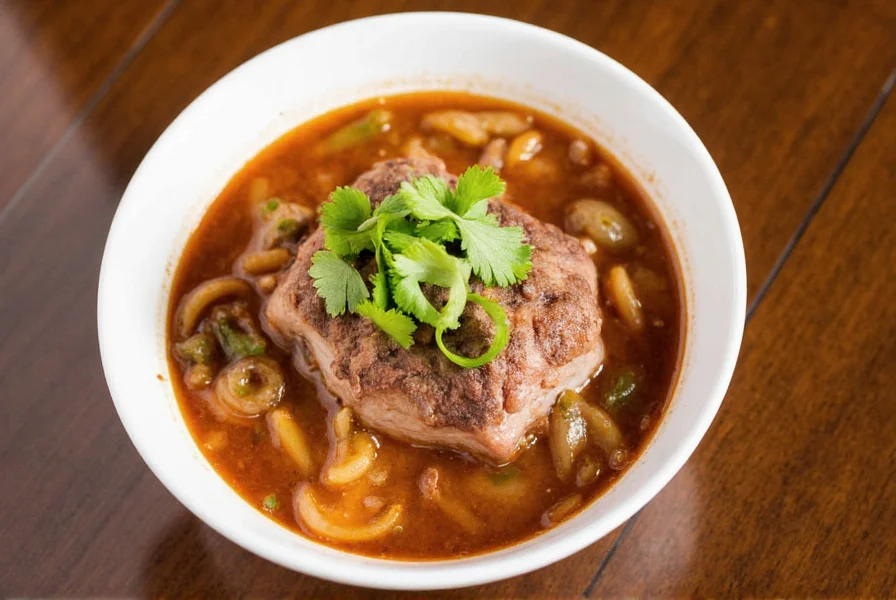
Source quality matters significantly for pozole's final flavor profile. Here's where to find the best options:
| Source | Quality Indicators | Price Range (per lb) | Best Purchase Strategy |
|---|---|---|---|
| Local Butcher | Visible marbling, fresh cut, bone-in options | $4.50-$6.00 | Ask for "first cut" Boston butt with skin |
| Specialty Markets | Heritage breed labels, detailed origin info | $5.00-$7.00 | Look for Iberico or Duroc breed for superior flavor |
| Grocery Store Premium | USDA Choice grade, organic certification | $3.50-$4.50 | Check sell-by dates and avoid pre-packaged | Grocery Store Standard | Basic marbling, consistent color | $2.75-$3.50 | Buy whole rather than pre-cut for better quality |
For authentic pozole, prioritize local butchers or specialty markets where you can inspect the meat personally. The difference in marbling quality between standard grocery store pork and premium cuts dramatically impacts your final dish's richness and texture.
Spice Combinations That Enhance Pork Shoulder in Pozole
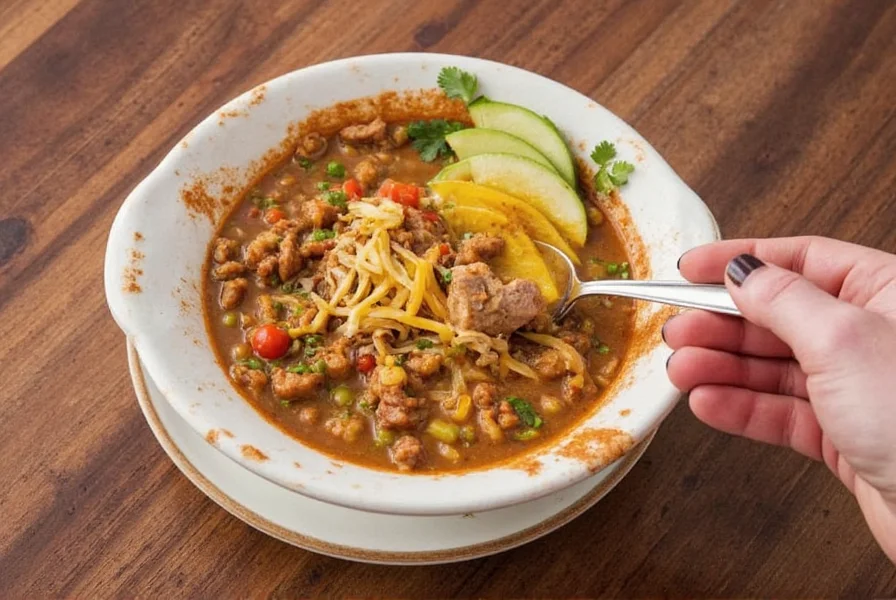
The right spice profile balances the richness of pork shoulder without overwhelming its natural flavor. Traditional pozole uses specific chili combinations that complement rather than compete with the meat:
Essential Flavor Pairings
- Guajillo Chilies: Earthy base (60% of chili blend) - provides body without excessive heat
- Ancho Chilies: Fruity sweetness (30% of blend) - balances pork's richness
- Pasilla Chilies: Complex depth (10% of blend) - enhances meat's umami
- Toasting Technique: Dry roast chilies 45 seconds per side before rehydrating to maximize flavor extraction
Avoid common mistakes like using pre-ground chili powder, which lacks the vibrant flavor of freshly toasted and ground chilies. For optimal results, toast whole dried chilies until fragrant (but not burnt), remove stems and seeds, then soak in hot water for 20 minutes before blending into a smooth paste.
Step-by-Step Perfect Pork Shoulder Pozole Recipe
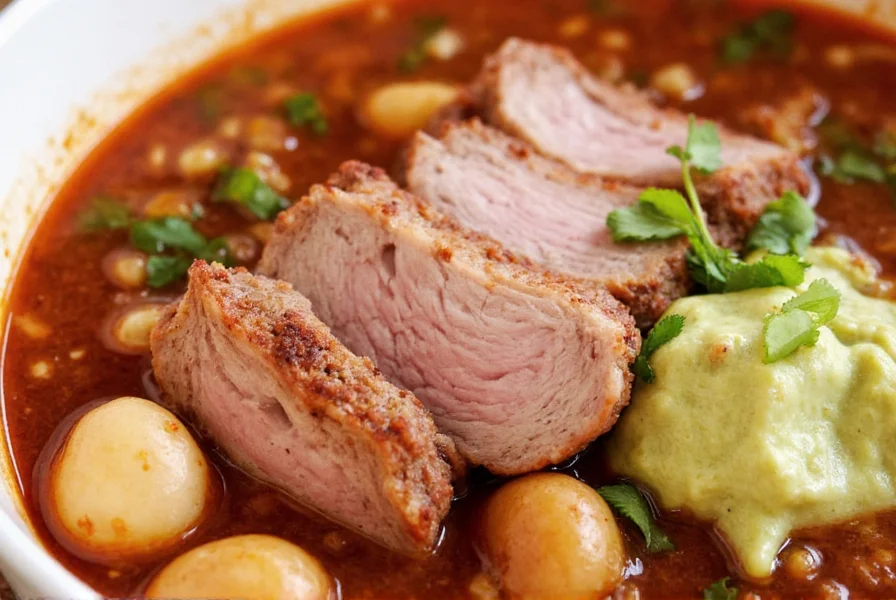
This professional-tested method guarantees tender pork shoulder with rich, complex broth every time:
Ingredients:
- 4-6 lbs bone-in Boston butt pork shoulder
- 2 cups dried white hominy (soaked overnight)
- 6 guajillo chilies, toasted and rehydrated
- 3 ancho chilies, toasted and rehydrated
- 1/4 cup lard or vegetable oil
- 1 large white onion, quartered
- 6 garlic cloves, peeled
- 2 tbsp cumin seeds, toasted
- 1 tbsp dried Mexican oregano
- 3 bay leaves
- 2 tsp sea salt plus more to taste
Professional Method:
- Dry brine pork shoulder: Rub 1 tsp salt over entire surface and refrigerate uncovered for 12 hours
- Toast chilies: Heat dry skillet over medium, toast chilies 45 seconds per side until fragrant but not burnt
- Rehydrate chilies: Cover with boiling water and soak 20 minutes until pliable
- Roast pork shoulder: Preheat oven to 300°F, place pork skin-side up in roasting pan, cook 2.5 hours until internal temp reaches 165°F
- Create chili paste: Blend soaked chilies with garlic, cumin, oregano, and 1 cup soaking liquid until smooth
- Sauté aromatics: In large pot, heat lard over medium, add onion and sauté until golden
- Bloom spices: Add chili paste and cook 5 minutes, stirring constantly to deepen flavor
- Combine ingredients: Add roasted pork (remove skin first), hominy, bay leaves, and enough water to cover by 2 inches
- Simmer gently: Cover and cook on stovetop at lowest setting 1.5-2 hours until pork reaches 195°F
- Shred and finish: Remove pork, shred, return to pot, adjust salt, simmer 30 minutes more
Pork Shoulder Pozole: Critical Questions Answered
Essential Answers for Perfect Pozole Every Time
Why does my pozole turn out dry even when using pork shoulder?
Dry pozole almost always results from insufficient fat content or improper cooking temperature. Authentic pozole requires pork shoulder with at least 20% fat marbling. If your meat appears lean, add 2-3 tablespoons of lard to the broth. More commonly, cooking at too high a temperature (above 185°F) causes fat to render out too quickly rather than slowly emulsifying into the broth. Maintain a gentle simmer where bubbles barely break the surface.
How do I prevent my pork shoulder from becoming stringy in pozole?
Stringy texture indicates overcooking or incorrect cut selection. Pork shoulder should reach 195°F internal temperature, but not exceed 205°F. Use an instant-read thermometer to monitor. Boston butt (upper shoulder) contains more intramuscular fat than picnic roast, creating more tender results. If using picnic roast, cook to 190°F rather than 195°F. Never boil pozole vigorously—maintain a bare simmer throughout cooking.
Can I use pork shoulder blade roast instead of Boston butt for pozole?
Yes, but with important distinctions. Pork shoulder blade roast (sometimes labeled "blade roast") comes from the same upper shoulder area as Boston butt but includes the shoulder blade bone. This cut contains slightly more connective tissue, requiring 30-45 minutes additional cooking time. The bone adds flavor but makes shredding more difficult. For best results, cook blade roast to 200°F before removing the bone and shredding.
What's the minimum cooking time for pork shoulder in pozole?
Authentic texture requires minimum 3 hours of cooking time at 300°F oven temperature or equivalent stovetop simmering. This allows collagen to fully convert to gelatin. Rushing the process (under 2.5 hours) leaves connective tissue intact, resulting in chewy, stringy meat. Pressure cookers can reduce time to 90 minutes but sacrifice some flavor complexity from the Maillard reaction. Never cook pork shoulder for pozole less than 2 hours regardless of method.
Why does traditional pozole use pork shoulder instead of pork belly?
While pork belly has higher fat content (35-40%), it lacks the crucial connective tissue that creates pozole's distinctive texture. Pork shoulder's collagen-to-fat ratio (approximately 70% fat, 30% collagen) produces the perfect broth viscosity and meat texture. Pork belly would render down to crispy bits without providing the necessary gelatin structure, resulting in greasy rather than rich broth. The traditional cut balances richness with body.
How do I know when pork shoulder is perfectly cooked for pozole?
Perfectly cooked pozole pork should meet three criteria: 1) Internal temperature between 190-200°F, 2) Fork test: when you insert and twist a fork, meat separates cleanly without resistance, 3) Texture: shreds into strands approximately 1/8 inch thick. If meat pulls apart too easily (like pulled pork), it's overcooked. If any resistance remains when shredding, it needs 30-45 minutes more cooking. The broth should have a slight viscosity when cooled slightly.
Does skin-on pork shoulder make better pozole?
Skin-on pork shoulder significantly enhances pozole flavor through several mechanisms: the skin's collagen converts to additional gelatin, the fat layer beneath renders slowly into the broth, and roasting creates fond (browned bits) that adds complexity. Professional tip: roast skin-side up at 300°F for 2 hours before adding to pozole, then remove skin before shredding. The skin itself becomes inedibly tough during pozole cooking but contributes valuable flavor compounds during initial roasting.
Can I freeze cooked pork shoulder for pozole?
Yes, but with critical timing considerations. Freeze cooked pork shoulder immediately after cooking (while still warm) in its broth for best results. The fat content protects against freezer burn. Never freeze shredded meat without broth—this causes moisture loss. When reheating, thaw overnight in refrigerator then gently reheat with additional broth to restore moisture. Frozen pork shoulder pozole maintains quality for up to 3 months, but flavor peaks at 6 weeks.
The Essential Role of Pork Shoulder in Authentic Pozole
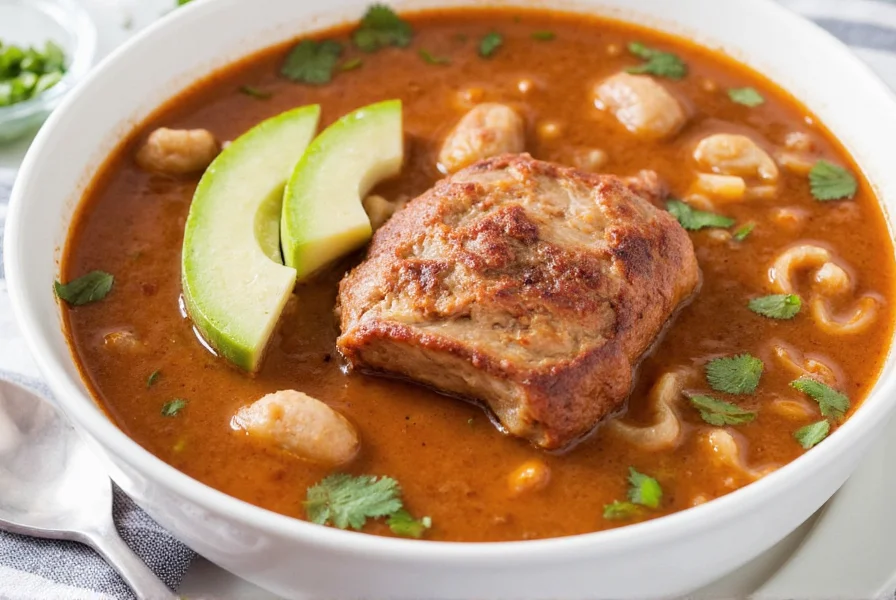
The magic of pozole lies in the transformative power of pork shoulder when properly prepared. Its unique composition—neither too lean nor too fatty—creates the perfect balance that defines authentic pozole. When the collagen converts to gelatin during slow cooking, it produces that distinctive rich broth that coats the hominy kernels while the meat itself achieves that ideal shreddable texture.
Mastering pork shoulder preparation for pozole isn't about complex techniques but understanding the science behind the transformation. By selecting the right cut (Boston butt with visible marbling), maintaining proper cooking temperature (gentle simmer below 185°F), and allowing sufficient time for collagen conversion (minimum 3 hours), you'll consistently create pozole with the depth of flavor and texture that makes this traditional dish so beloved.
Remember that authentic pozole isn't just about following a recipe—it's about respecting the ingredients' natural properties. When pork shoulder is given the time and conditions it needs to shine, it delivers results no other cut can match. The next time you prepare pozole, pay attention to how the pork shoulder transforms, and you'll understand why this humble cut remains indispensable to authentic Mexican cuisine.

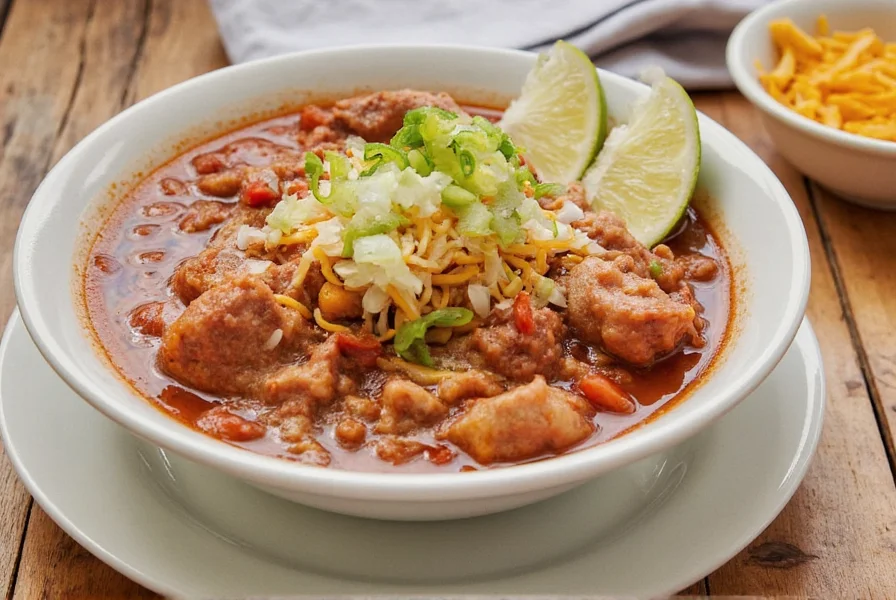









 浙公网安备
33010002000092号
浙公网安备
33010002000092号 浙B2-20120091-4
浙B2-20120091-4